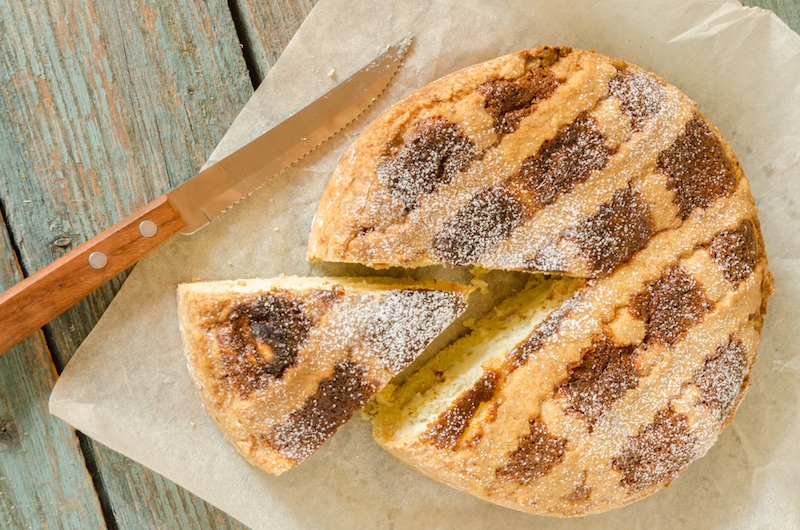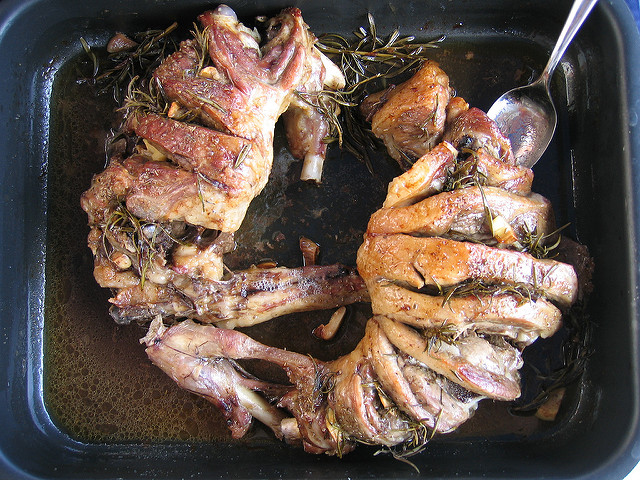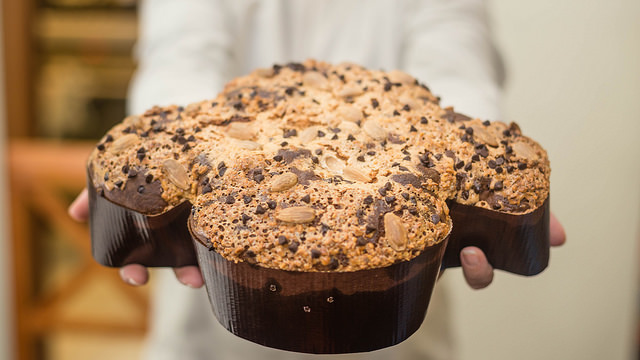12 Italian Easter foods that you must try at least once

There is not much to do in Italy this Easter besides staying at home and eating. Here are 12 classic Italian Easter dishes to try at this time of year, from traditional lamb to artichokes to an unusual pig blood dessert.
lamb
Easter Monday is known as Easter Monday ("Little Easter") in Italy, but is sometimes also called Lamb Monday or "Lamb Monday", giving a clue to the more traditional center of the dining table.
The Romans generally prepare lamb soup or cook it in an egg and citrus sauce, southern Italians often put it in a stew, while elsewhere it will be roasted with garlic and rosemary - each family and restaurant will have its own special recipe.
However, the last few years have seen meat fall off the menu, coinciding with an increase in Italians opting for a vegan diet. Former Prime Minister Silvio Berlusconi "adopted" five lambs in a pro-vegetarian Easter stunt, while in five years the number of Italian lambs sent to the slaughterhouse decreased by more than half.
If you don't eat meat, why not opt for the vegetarian lamb pie - an elaborate sheep-shaped dessert, which you can find in many bakeries.
Fish
Good Friday, a sad date on the Catholic calendar, was traditionally a day of fasting. Nowadays some Catholic families opt for fish, typically choosing light dishes with simple seasoning.
Indeed, many people observe meatless Fridays throughout Lent - some even respecting tradition all year round - in homage to Jesus' sacrifice.
artichokes
Stuffed, braised or fried, enjoyed as a side dish or appetizer, artichokes are a spring staple food and a common feature of the Easter meal.
Sciusceddu (meatball and egg soup)
Originally from Messina in Sicily, this dish is traditionally eaten on Easter Sunday and is a bit like Chinese egg soup.
The name derives from the Latin word juscellum, which simply means "soup", and is a simple dish, with meatballs and eggs prepared in broth with herbs and cheese.
Pasqualina cake
Don't let the word cake fool you: this dish is salty rather than sweet. It is a Ligurian food, a kind of quiche with spinach and cheese.
Tradition dictates that there should be 33 layers of pasta (three of which are an important number in Christian doctrine) and it is probably the delicacy of the preparation which means that the cake is reserved for special occasions.
Sweet black pudding
The black pudding is the Italian version of what the British call black pudding and what the Americans know as black pudding - but unlike those savory dishes, sweet black pudding is actually a dessert made from pork blood and chocolate.
The dish is traditionally eaten in the period before Easter in most of central and southern Italy, but is particularly associated with the Basilicata region, on the instep of the Italian boot.
The recipe combines dark chocolate and pork blood to create a rich, sweet and sour cream, which can be eaten with ladyfinger biscuits or used as a filling for shortcrust tarts.
We are not sure if this is worth a recommendation, but in the TV series Annibale the title character lists it as one of his favorite desserts.
Easter dove
This cake is perhaps the best known culinary symbol of Easter in Italy. Called "Easter dove", it is cooked in the shape of a bird to symbolize peace and made with candied citrus peel and almonds.
Black Easter Rice (Black Easter Rice)
Another Sicilian specialty, this dish is prepared with black rice. However, while black risotto is usually covered in cuttlefish ink, this is a sweeter surprise: the coloring comes from chocolate. Black rice is a dessert similar to rice pudding, made with milk, rice, cocoa and chocolate, and decorations usually composed of cinnamon and icing sugar.
Legend has it that the dessert was made for the first time in homage to the Black Madonna of Sicily, a mysterious statue in Tindari believed to be responsible for numerous miracles.
rice cake
An alternative rice-based dessert typical of Emilia-Romagna, this simple dessert is made of rice and eggs, usually flavored with lemon or perhaps a liqueur.
It is not exclusive to Easter and is also a popular choice during the Christmas season and other religious holidays. Centuries ago, the locals distributed it to neighbors, pilgrims or people who participated in religious processions.
Neapolitan Pastiera
This Neapolitan dessert is found throughout southern Italy at this time of year, and its ricotta spiga ornage filling makes it deliciously moist. The original recipe is believed to have been created by a nun who specifically chose to use ingredients that mean life.
If you do it yourself, keep in mind that chefs usually recommend starting the process on Good Friday to allow plenty of time for flavors - from orange peel and orange blossom water - to be infused before the Easter Sunday.
Ramerino bread
You will discover that each region boasts its own varieties of Easter bread, sweet or salty. One of the best is the Tuscan Pan di Ramerino, similar to the sandwich with hot English focaccia and flavored with raisins and rosemary.
Eat these on Holy Thursday, when you can buy them from street vendors or from any bakery in the region. Local priests often bless bread.
Easter eggs
If you are worried about doing without the most familiar comforts, don't worry: chocolate eggs have become a part of the Easter tradition in Italy, often with a surprise hidden in the middle.
You will see elaborate displays of extravagantly packaged eggs that line the windows of Lent. Hold on until Easter Sunday if you can.

